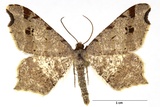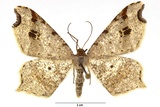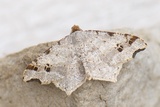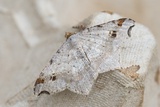Macaria alternata ([Denis & Schiffermüller], 1775) Species
Last modified: Oct. 16, 2025, 11:58 a.m.
A common species throughout Belgium.
This species is considered Least Concern according to the IUCN Red List category for Flanders 2023.
Details
- Classification
- Family: Geometridae > Subfamily: Ennominae > Tribus: Macariini > Genus: Macaria > Species: Macaria alternata
- Vernacular names
- Donker klaverblaadje (NL), Sharp-angled Peacock (EN), La Philobie alternée (FR), Dunkelgrauer Eckflügelspanner (DE)
- Synonyms
- Macaria alternaria (Hübner, 1799)
- First mention in Belgium
- De Sélys-Longchamps E. 1844. Énumération des insectes Lépidoptères de la Belgique. — Mémoires de la Société royale des Sciences de Liége 2: 1–35. On page 15 (as alternaria). view page
- Status
-
Native
Distribution
Genitalia
Males: the genitalia of males Macaria alternata and Macaria notata are almost indistinguishable. On M. alternata, the sacculus is stated to be slightly more protruding than on Macaria notata, but this should not be regarded as diagnostic, however examination of the eighth sternite is usually sufficient for ID.
Eight sternite deeply cleft, lobes set close together.
Females: Bursa copulatrix twice or three times lenght of ductus bursae.
Bionomics
Hibernates as pupa in a cocoon underground.
The adults are active from dusk and later come to light.
Flight periods
The adults fly in two generations a year from mid-April till late August.
Observed on
- Host plant (species):
- Prunus spinosa, Alnus glutinosa and Hippophae rhamnoides
- Host plant (genera):
- Salix
The larva lives on various deciduous trees like Salix, Alnus glutinosa, Prunus spinosa and Hippophae rhamnoides.





